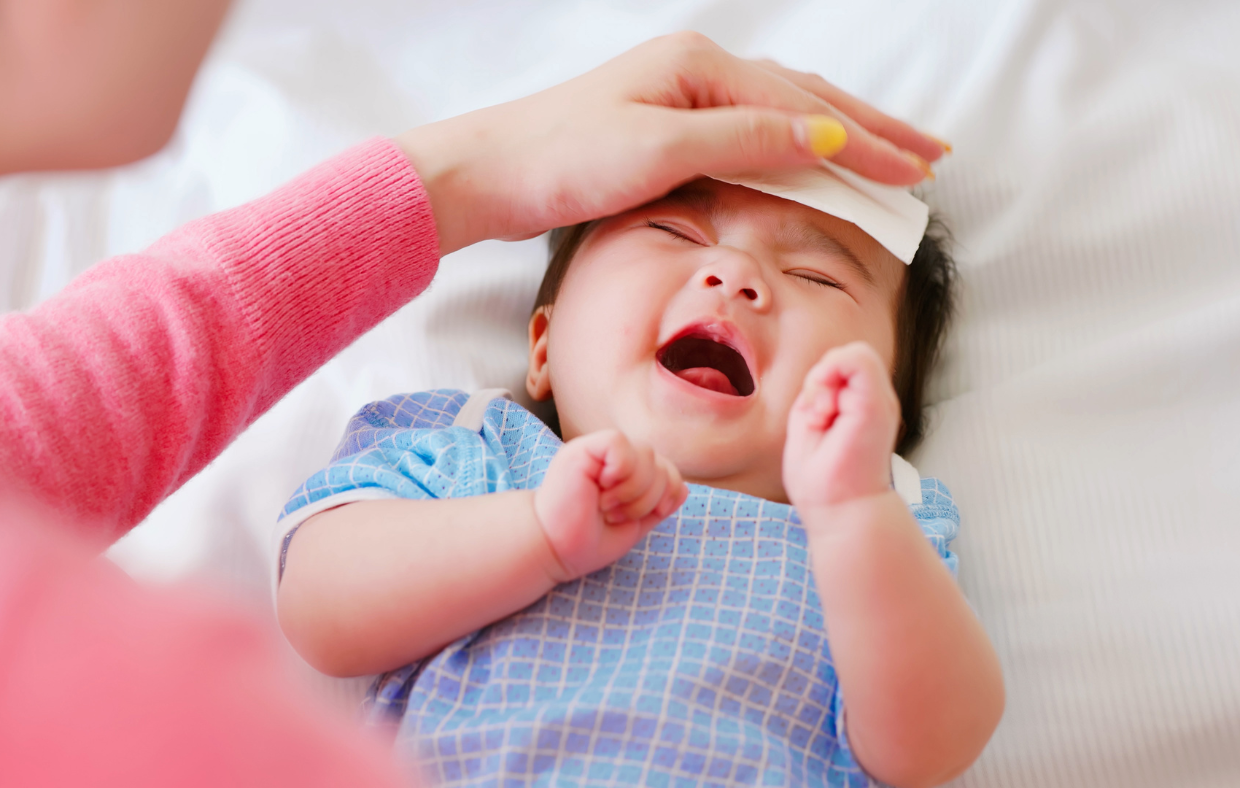Prevention is the key in protecting the vulnerable against whooping cough
Pertussis—commonly known as whooping cough—is a highly contagious bacterial infection that affects the lungs and airways and can cause people to cough violently and uncontrollably. Before the pertussis vaccine was available in the 1940s, more than 200,000 cases of pertussis occurred annually in the US. Although more rare now, pertussis outbreaks continue to occur, most recently in nearby Marin County.
Pertussis is most dangerous for people who are either very young or very old, as well as those who are immunocompromised. For them, pertussis can cause severe symptoms, hospitalization, and sometimes death. For all adults and children, the best way to reduce the spread is to get vaccinated. This is especially important for pregnant women (who can pass on antibodies that fight pertussis to their babies) and for those who spend time around babies.
What is pertussis?
Pertussis is a highly contagious respiratory infection caused by the bacteria Bordetella pertussis. When an infected person coughs or sneezes, pertussis easily spreads through respiratory droplets. Pertussis is known as whooping cough because of the high-pitched “whoop” sound an infected person makes as they struggle to breathe after an intense, uncontrollable coughing fit.
Symptoms, side effects, and treatment
Pertussis can be easily transmitted by infected adults and older kids to babies and young children who aren’t yet fully vaccinated against it. While adolescents’ and adults’ pertussis symptoms are often mild, the symptoms are more severe in young children and babies and can include uncontrollable coughing, exhaustion, vomiting, and pauses in breathing called apnea. As many as half of babies who get pertussis require hospitalization.
There are three stages of pertussis. The catarrhal stage lasts about one to two weeks. Symptoms in that stage can include a runny nose, sneezing, low-grade fever, and a cough. The paroxysmal phase sets in for the next one to two months. This is when intense coughing fits followed by a whooping sound can develop as inflammation builds in the airways. During this period, babies can stop breathing, turn blue, or cough so hard they vomit. This is usually the stage where kids and babies are diagnosed as it becomes clear they don’t simply have a cold. Following this is the convalescent phase, which lasts weeks to months. During this time, the lungs and airways are recovering from the significant damage that occurred during the course of the infection. Throughout the lifespan of the infection, a number of other serious complications can occur, including pneumonia, seizures, and cracked ribs or ruptured blood vessels in the eyes from the strain of coughing.
If you or someone in your care might have pertussis, wash hands frequently, wear a mask in public, and see a medical provider as soon as possible so they can swab the inside of the nose and diagnose the problem. Medical providers will prescribe a course of antibiotics for those who test positive.
Antibiotics are most effective when the infection is caught early, before the airways are inflamed. Because antibiotics cannot reverse the inflammation caused by the bacteria, recovery is not typically quick like treating an ear infection or strep throat. Antibiotics do limit the infection’s transmission, so infected people should isolate until the full course of antibiotics is complete. Household members and close contacts should also take a course of preventive antibiotics. If a patient with pertussis requires hospitalization, they will typically receive supportive care such as oxygen and IV fluids.
Immunization is the best way to protect the vulnerable
The CDC recommends that children receive vaccinations against pertussis as part of their childhood immunization schedule. The vaccine for children is called diphtheria-tetanus-acellular pertussis (DTaP), which protects against diphtheria and tetanus as well as pertussis. Children should receive the primary DTaP series at two months old, four months old, and six months old, followed up with DTaP boosters at 15 to 18 months and four to six years old.
Adolescents and adults (especially those who care for or live with babies) should stay up to date with pertussis boosters. The booster for ages seven and older is called Tdap and should be given at age 11 and at least every 10 years after that.
Pregnant women should receive a pertussis booster during each pregnancy. The CDC found that vaccination against pertussis during the mother’s third trimester prevented a remarkable 78 percent of pertussis cases in infants younger than two months.
People who have been with a sick baby struggling with pertussis know how serious and scary this can be. I encourage anyone who isn’t familiar with pertussis to watch a CDC or Mayo Clinic video on YouTube to see what the symptoms are like for young children. The pertussis vaccine has been safely administered for decades and is highly effective. Vaccination can reduce the spread of disease, prevent outbreaks, and protect the vulnerable people in our communities.
Dr. Casey Johnston is a pediatrician at MCHC Health Centers in Ukiah and Lakeport.

 MyChart Login
MyChart Login

